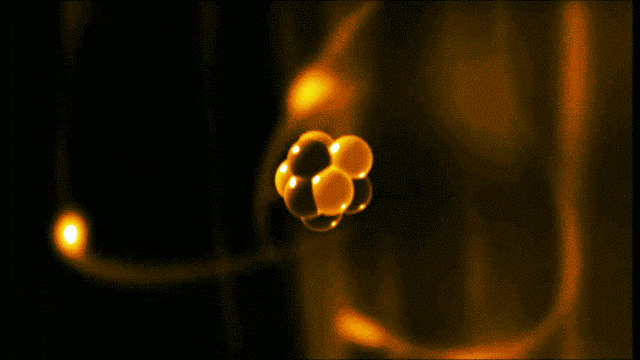In 2019, a group of scientists discovered a new state of matter that allows atoms to exist as both a solid and a liquid at the same time. This new state of matter — known as a “supersolid” or “chain-melted stage” — has been the subject of much speculation and theoretical research for decades, but has only recently been observed in experiments.
The study, which was led by Dr. Andreas Hermann at the University of Edinburgh, has the potential to revolutionize our understanding of the natural world, and open up new possibilities for the research of materials in science and technology.
Until now, it was believed that only three states of matter existed: liquid, solid, or gas. However, it was unclear whether structures could represent a distinct state of matter during the transition stage between two states.
Manipulated atoms react differently
Using powerful computer simulations in nanotechnology, the team of experts was able to create a supersolid using a system of potassium atoms that were trapped in an optical lattice (which is formed by the interference of laser beams in manipulated atoms).
By changing up the interactions between the atoms, the scientists were able to create a state in which the atoms formed a solid crystal-like structure. But at the same time, they also exhibited properties of a liquid “flowing without resistance.”
Success
You are now signed up for our newsletter
Success
Check your email to complete sign up
“Potassium is one of the simplest metals we know, yet if you squeeze it, it forms very complicated structures,” said Hermann, who also teaches a course at the University’s School of Physics and Astronomy.
“Chemical interactions between atoms in one lattice are strong, meaning they stay in a solid form when the structure is heated, while the other atoms melt into a liquid state,” the researchers said.
Groundbreaking findings
Simulating how up to 20,000 potassium atoms behave under extreme conditions — such as heat or cold — the study revealed that the structures formed represent a “stable chain-melted state,” confirming the existence of a fourth state of matter.
“Applying pressure to the atoms leads to the formation of two interlinked solid lattice structures,” the researchers said, adding that over half a dozen tested elements — including sodium and bismuth — were “thought to be capable of existing in the newly-discovered state.”
The existence of supersolids challenges our current understanding of the relationship between solid and liquid states of matter. In a traditional solid, the atoms are closely packed together and have fixed positions, while in a liquid, the atoms are free to move around. However, in a supersolid, the atoms are both closely packed together and able to flow freely — creating a unique state of matter that is neither purely solid, nor purely liquid.
The experts were also studying a type of material called a “polymer,” which is made up of long chains of molecules. By heating the polymer to a specific temperature and applying a mechanical stress, the scientists were able to create a state in which the polymer chains began to move and flow like a liquid, while still maintaining a solid-like structure.
Revolutionizing science
This discovery has far-reaching implications for fields in chemistry and physics, and could lead to new technologies and applications. For example, supersolids may be useful in the creation of highly efficient sensors, laser beams, and ultra-low-friction devices; while the ability to control the properties of the chain-melted stage may help in the study of soft matter physics, and understanding the behavior of materials at the nanoscale.
Furthermore, the ability to control the properties of supersolids may also inspire research in the field of quantum mechanics, and the behavior of matter at extremely low temperatures.
Research suggests that materials such as carbon and bacteria stored under frozen grounds (permafrost) in the Arctic and parts of Siberia could start to thaw as environmental concerns — including climate change and pollution intensify — posing a significant risk to the health of modern humans and wildlife.
READ MORE:
- Yakutia in Serbia Melts Under Wildfires, Pollution Concerns Raise Citizens’ Frustrations
- German Expert Explains What’s Stopping Green Energy From Becoming Sustainable and Cost-Effective
Overall, the discovery of supersolids or chain-melted atoms is a groundbreaking achievement that has the potential to revolutionize our understanding of the natural world. It is an exciting time for the field of physics as scientists continue to explore the properties and potential uses of this new state of matter to optimize equipment used in technology, artificial intelligence, robotics and physics.
“Recreating this unusual state in other materials could have all kinds of applications,” the study concluded.







